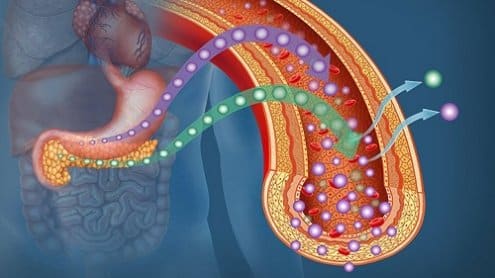What is fasting hyperglycemia?
Monitoring blood glucose levels is important in the diagnosis and treatment of diabetes. Fasting hyperglycemia is a symptom to look for in the onset of diabetes. Hyperglycemia is a state of having elevated blood glucose levels. In a fasted state—after not consuming meals for 8 or more hours—blood glucose typically resides between 70–130mg/dL. Levels above 130mg/dL in a fasting state would indicate that someone is experiencing fasting hyperglycemia and most likely decreased insulin sensitivity.
Fasting blood glucose levels are important to measure, if you consider the effects of metabolism during and after sleep. High glucose levels can remain elevated overnight, which can propagate complications with diabetes. It is important to note that in some cases this can actually be caused by consuming food prior to sleeping in order ward off the potential for hypoglycemia overnight. This may not be the best strategy for managing fasting blood glucose levels.
Signs and symptoms
How would you know that you are experiencing fasting hyperglycemia? If it has been several hours since your previous meal, you may experience symptoms such as headaches, blurred vision, fatigue, increased thirst or hunger, or frequent urination. These are just a few symptoms to watch for, and they may not occur all at once. These symptoms may also appear with the onset of hypoglycemia (low blood sugar), so if you’re in a fasted state it is important to check your blood glucose levels in order to know which steps to take when bringing it back to normal levels.
—
Disclaimer: Please note that the contents of this community article are strictly for informational purposes and should not be considered as medical advice. This article, and other community articles, are not written or reviewed for medical validity by Canadian Insulin or its staff. All views and opinions expressed by the contributing authors are not endorsed by Canadian Insulin. Always consult a medical professional for medical advice, diagnosis, and treatment.


